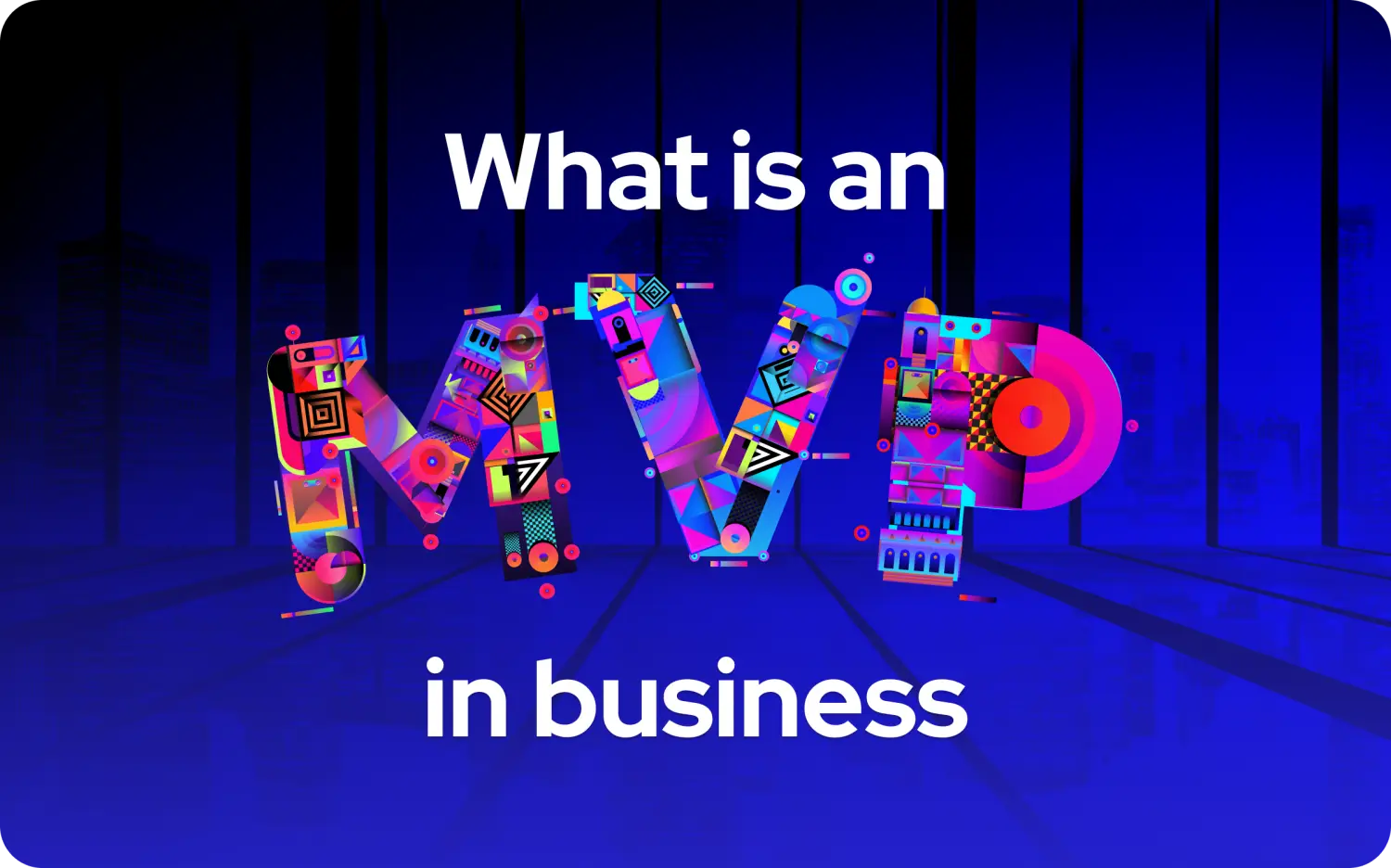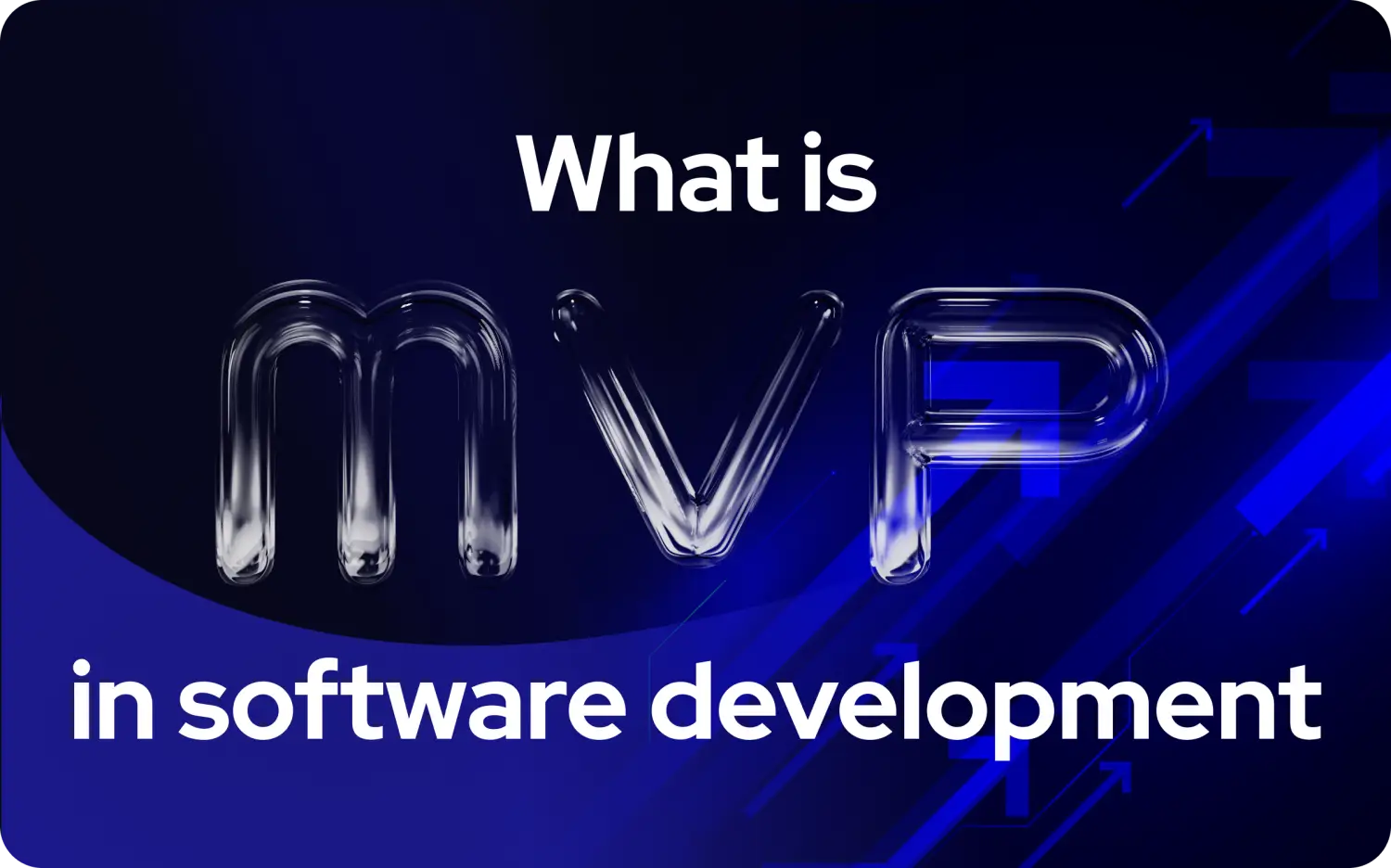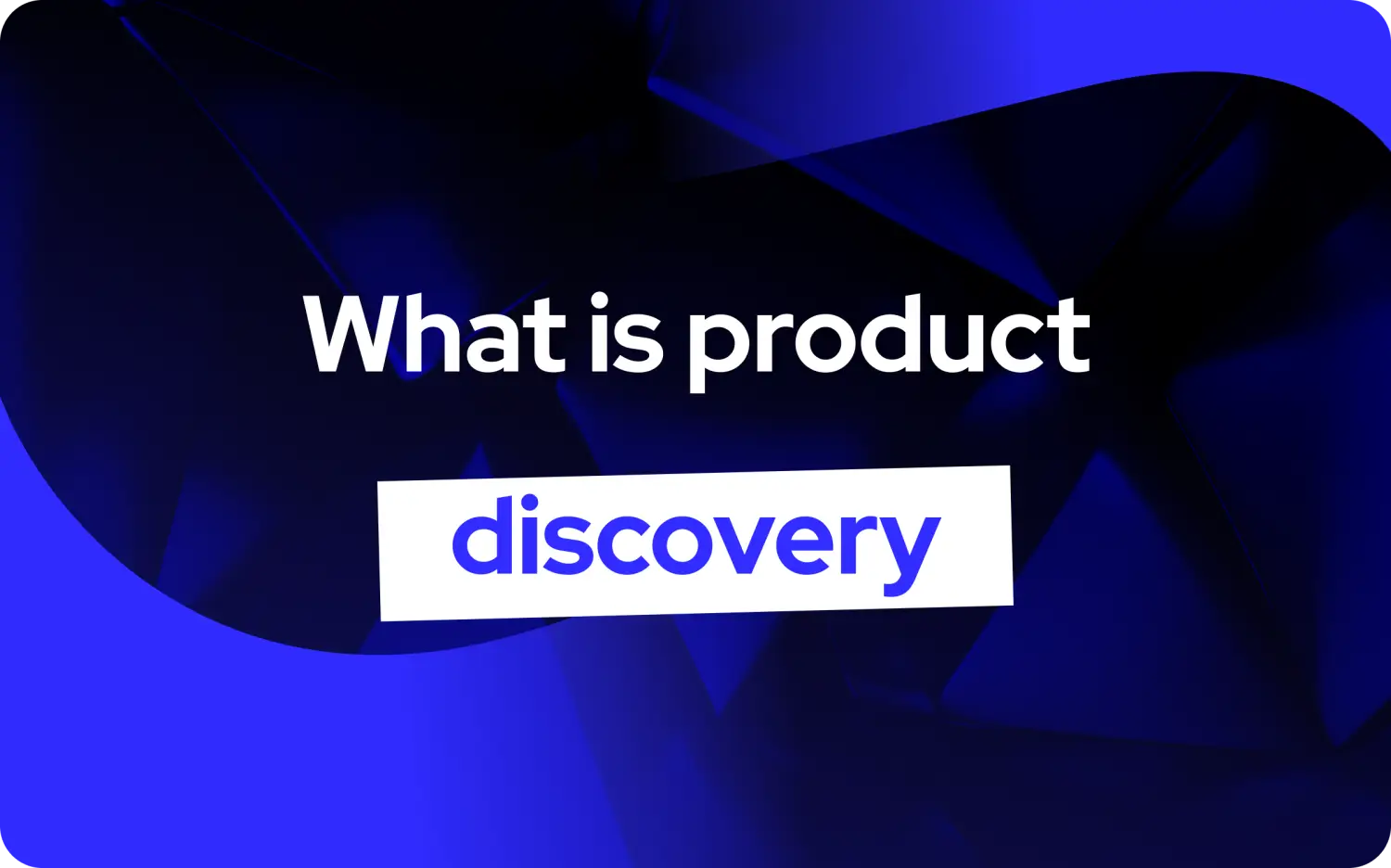
An MVP (Minimum Viable Product) in business represents the simplest version of a product that delivers sufficient value to attract early customers and validate market assumptions. This approach enables companies to test core hypotheses with minimal investment before committing substantial resources to full development.
The MVP concept stems from Lean Startup methodology, focusing on rapid iteration and customer feedback rather than extended development cycles. For established companies and startups alike, MVPs provide a structured framework for reducing market risks while accelerating time-to-market.
What an MVP really is
An MVP strips away everything except what's needed to solve one specific problem for one specific group of people. It's not a cheap version of your dream product, it's a focused solution that proves people want what you're building.
The MVP concept seems straightforward until you try to build one. Every feature feels critical when it's your idea. But here's the test I use with founders: if you removed this feature, would your product still solve the main problem? If yes, cut it.
Your MVP should feel almost embarrassingly simple when you launch it. I've seen successful MVPs that were literally just landing pages with email signup forms. Others were basic mobile apps with three screens. The common thread? They solved a real problem and proved people cared enough to use them.
Understanding the difference between MVPs and prototypes helps avoid the trap of building demos instead of real products.
Why most people get MVPs wrong
The biggest mistake? Thinking your MVP needs every feature you've dreamed up. I once worked with a founder who insisted his MVP needed 47 features. Six months later, he discovered users only cared about three of them.
Here's what your MVP actually needs:
- Solves a real problem - Not something you think might be a problem
- Simple enough to build quickly - If it takes more than 2-3 months, it's not minimal
- Provides clear feedback - You can tell if it's working or not
Everything else is just stuff you think would be cool to have.
Different types of MVPs that actually work
Not every MVP looks the same, and that's actually good news. Your MVP should match what you need to learn most urgently.
Digital MVPs are the fastest to build and test. Instagram's MVP was just photo sharing with basic filters , no Stories, no direct messages, no video. They focused on one thing: making phone photos look better. That simplicity attracted users who wanted exactly that, proving the core idea before adding complexity.
Physical product MVPs take longer but follow the same principle. Your first version might be 3D-printed, simplified, or even held together with duct tape. The goal isn't perfection , it's proving people want what you're building and will pay for it.
Service-based MVPs might be the easiest because you can start completely manually. Instead of building software to automate everything, do it by hand for your first customers. Once you prove the concept works, then invest in automation.
For founders looking to move fast, building an MVP with no-code development services can get you from idea to working product in days instead of months.
How to plan your MVP without wasting time or money
The biggest MVP failures happen before any code gets written. They happen when founders skip validation and jump straight into building. I get it , building feels productive. But building the wrong thing is worse than not building at all.
Before you write a single line of code, answer these questions clearly: What problem are you solving? Who has this problem? How will you know if your solution works? If you can't answer these, you're not ready to build anything yet.
Start with the problem, not your solution
Here's where most founders go wrong: they fall in love with their solution before they understand the problem. I've done this myself. You have this brilliant idea for how to solve something, and you assume everyone else sees the problem the same way you do.
Customer interviews are your best friend here, but you have to do them right. Don't ask people if they would use your product , they'll lie to be nice. Ask them about their current problems, how they solve them now, and what they've tried before. The insights you get will completely reshape your MVP.
Before diving into development, understand how to plan your MVP to avoid the most common pitfalls that kill products before they launch.
Uber's targeted approach shows this perfectly. They didn't try to solve transportation for everyone. They started with tech-savvy professionals in San Francisco who were frustrated with taxi service. This narrow focus let them perfect the core experience before expanding to other cities and user types.
Find your early adopters
The temptation with MVPs is to keep your target market broad so you don't "limit your potential." This is backwards thinking. The narrower your initial focus, the better your MVP will be at solving their specific problem.
Find the people who have your problem most severely and most frequently. These are your early adopters , they're more likely to try imperfect solutions and give you detailed feedback. Once you nail it for them, you can expand to other groups.
I learned this lesson the hard way. My project management tool failed because I tried to serve everyone , freelancers, small teams, enterprise users. If I'd focused just on freelancers who were drowning in client work, I might have built something they actually wanted.
Ruthless feature prioritization
Feature prioritization is where most MVPs go wrong. Every feature seems important when you're brainstorming, but your MVP should do one thing really well instead of ten things poorly.
Here's my simple test: if you removed this feature, would your MVP still solve the main problem for users? If yes, cut it. Your first version should feel almost uncomfortably simple.
I use this framework with founders:
- Must have: Essential for basic function , without this, your product doesn't work
- Should have: Makes the experience better but isn't critical for launch
- Could have: Nice improvements for future versions
- Won't have: Everything else goes in the backlog
For each feature you think is "must have," estimate how long it'll take to build. If any single feature will take more than 20% of your total development time, question whether it's really core to your MVP. Complex features can often be simplified or replaced with manual processes initially.
Building and Launching Your MVP Fast
Speed matters more than perfection in MVP development, but that doesn't mean shipping broken products. You want to find the sweet spot between "fast enough to learn quickly" and "good enough that users will actually use it."
The goal isn't to build your dream product , it's to build the smallest thing that proves your idea works. Everything else can wait.
Modern development that doesn't break the bank
No-code tools have completely changed the MVP game. What used to take months of custom development can now be built in days using platforms like Bubble, Webflow, or Airtable.
The key is choosing the right tool for your specific needs. Don't try to force a tool to do something it wasn't designed for, but also don't assume you need custom development for everything. Most MVP functionality can be handled by existing no-code solutions.
Understanding building an MVP with Bubble offers one of the fastest paths from idea to working product.
I've used this approach with several startups. One founder built a marketplace MVP using Bubble in three weeks that would have taken three months with custom code. Another used Airtable and Zapier to create a service booking system in five days. Both were able to start learning from real users immediately instead of waiting months for development.
Development Approach That Actually Works
Short development cycles keep you focused and prevent feature creep. I recommend 1-2 week sprints for MVP development , long enough to make meaningful progress, short enough to course-correct quickly when needed.
Each sprint should have a clear goal. Don't just aim to "work on the product" , aim to complete specific user workflows. This keeps development moving and gives you regular checkpoints to evaluate progress.
Your MVP doesn't need to be perfect, but it does need to work. Users will forgive missing features, but they won't forgive broken core functionality. Focus your testing on the main user path and make sure that works flawlessly.
Launch Strategy That Gets You Learning Fast
MVP launches should be quiet and controlled. You're not trying to get massive attention , you're trying to get the right attention from people who will use your product and give you feedback.
Start with people you can reach directly , your network, industry contacts, or people you interviewed during validation. These early users are more forgiving of rough edges and more willing to provide detailed feedback.
Set clear expectations about what you're launching. Tell users this is an early version and you're actively looking for feedback. This transparency actually increases engagement because users feel part of the development process.
When you're ready to take your product to market, understanding the best practices for launching an MVP can make the difference between success and failure.
What happens after launch
Here's what nobody tells you about MVPs: the launch is just the beginning. The real value comes from what you learn after people start using your product, and how you use those insights to build something they actually want.
Most founders think the hard work is building the MVP. Actually, the hard work is figuring out what to do with all the feedback, data, and unexpected user behavior you get after launch.
Track what actually matters
You'll be tempted to track everything, but that leads to analysis paralysis. Pick 3-5 metrics that directly relate to your core assumptions and focus on those.
For most MVPs, these are the metrics that matter:
- Are people using the core feature? (Activation rate)
- Are they coming back? (Retention rate)
- Are they completing the main workflow? (Completion rate)
- Are they willing to pay? (Conversion rate, if applicable)
Everything else is noise until you nail these basics.
Quantitative data tells you what's happening, but qualitative feedback tells you why. Both are essential for making good product decisions, especially when your user base is small and every piece of feedback matters.
Create multiple ways for users to give feedback , in-app prompts, email surveys, phone calls. Different people prefer different communication methods, and you want to make it as easy as possible for them to share their thoughts.
Learning from Real Users
Feature requests will pour in once you launch, but not all requests are created equal. Some come from your most engaged users, others from people who tried your product once and bounced. Weight feedback based on user engagement and business value.
Before building any new feature, validate it the same way you validated your original MVP. Talk to users, understand the problem, and make sure the solution aligns with your core value proposition. Feature creep kills more MVPs than technical problems.
Slack's evolution shows this perfectly. They started as an internal communication tool and discovered users were spending hours per day in the app. Instead of adding complex features, they focused on improving what users already loved: messaging, file sharing, and integrations. Each addition enhanced the core experience rather than distracting from it.
When and How to Scale
Scaling decisions should be driven by clear signals from your MVP performance. Are you consistently acquiring new users? Is retention improving? Are users willing to pay increasing amounts? These metrics indicate you're ready to invest more heavily in growth.
Don't scale too early , it wastes resources. But don't wait too long either, because you can lose momentum when you find product-market fit. The key is watching for consistent patterns in your data, not just good days or weeks.
Technical scaling gets attention, but operational scaling matters just as much. Can you handle 10x more customers with your current processes? Do you have the team and systems to maintain quality as you grow?
The real ROI of MVP development
The financial case for MVPs becomes clear when you compare costs and risks. Traditional product development might cost $50,000-$200,000 and take 6-12 months before you know if it works. MVP development typically costs $5,000-$25,000 and takes 4-8 weeks to get initial validation.
But the real savings come from avoiding expensive mistakes. If your MVP fails, you've lost a small amount of money and time. If your traditional product fails after full development, you've lost everything. The risk-adjusted return on MVP investment is almost always positive.
When you're ready to turn your MVP concept into reality, working with experienced development partners can accelerate your timeline significantly. The MVP approach isn't just about building products faster , it's about building better products by learning from real users throughout the development process.
If you're looking to validate your business idea quickly without the typical months-long development cycle, partnering with experienced no-code developers can get you from concept to working MVP in weeks rather than months. For those wondering how to build an MVP app efficiently, the right development approach can dramatically reduce both time and cost while maintaining quality.
The Bottom Line
Building an MVP isn't just about creating a simple version of your product , it's about fundamentally changing how you approach product development. Instead of assuming you know what users want, you're admitting you don't know and committing to learning quickly and cheaply.
The hardest part isn't the technical development or feature prioritization. It's the mindset shift from "building my vision" to "validating my assumptions." Your MVP will probably feel embarrassingly simple when you launch it, and that's exactly the point. Simple means you can build it quickly, test it thoroughly, and iterate based on real feedback.
I've seen founders struggle with this because they think launching something simple makes them look unprofessional. The opposite is true. Launching something focused and well-executed, even if it's basic, shows you understand your users and can prioritize what matters.
Remember that your MVP is just the beginning of your product journey, not the end. The real value comes from what you learn after launch and how you use those insights to build something people actually want. Whether you're validating a completely new idea or testing a new market, the MVP approach gives you the best chance of success while minimizing your risk of expensive failure.
The companies that succeed with MVPs aren't necessarily the ones with the best initial ideas , they're the ones that learn fastest from their users and adapt accordingly. Your job isn't to build the perfect product on the first try. Your job is to start the conversation with your market and let that conversation guide where you go next.
Need help building your business MVP? Book a free strategy call with our founder Tom to discover the fastest path to market for your idea.

Ready to build your product?






.avif)


